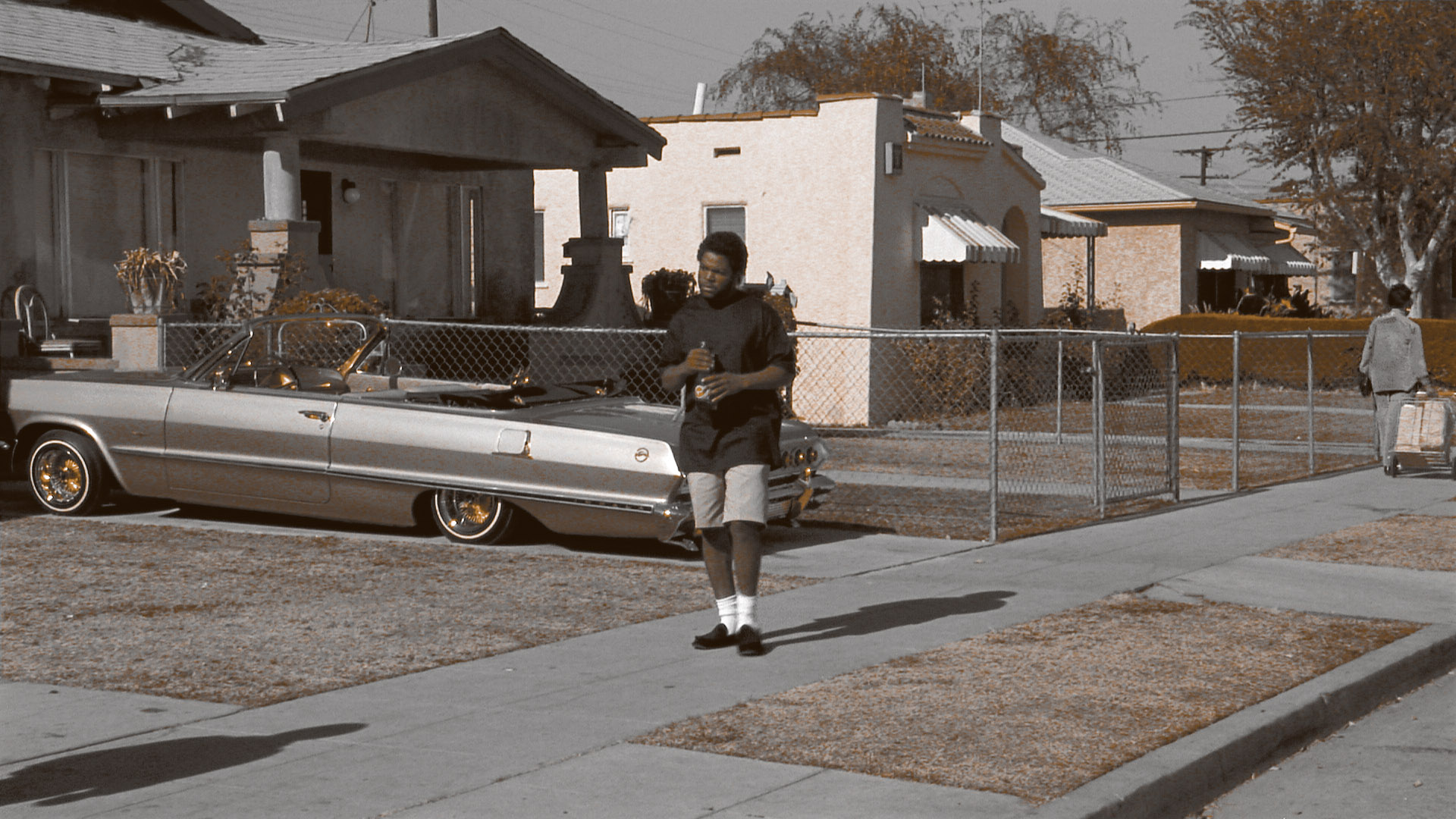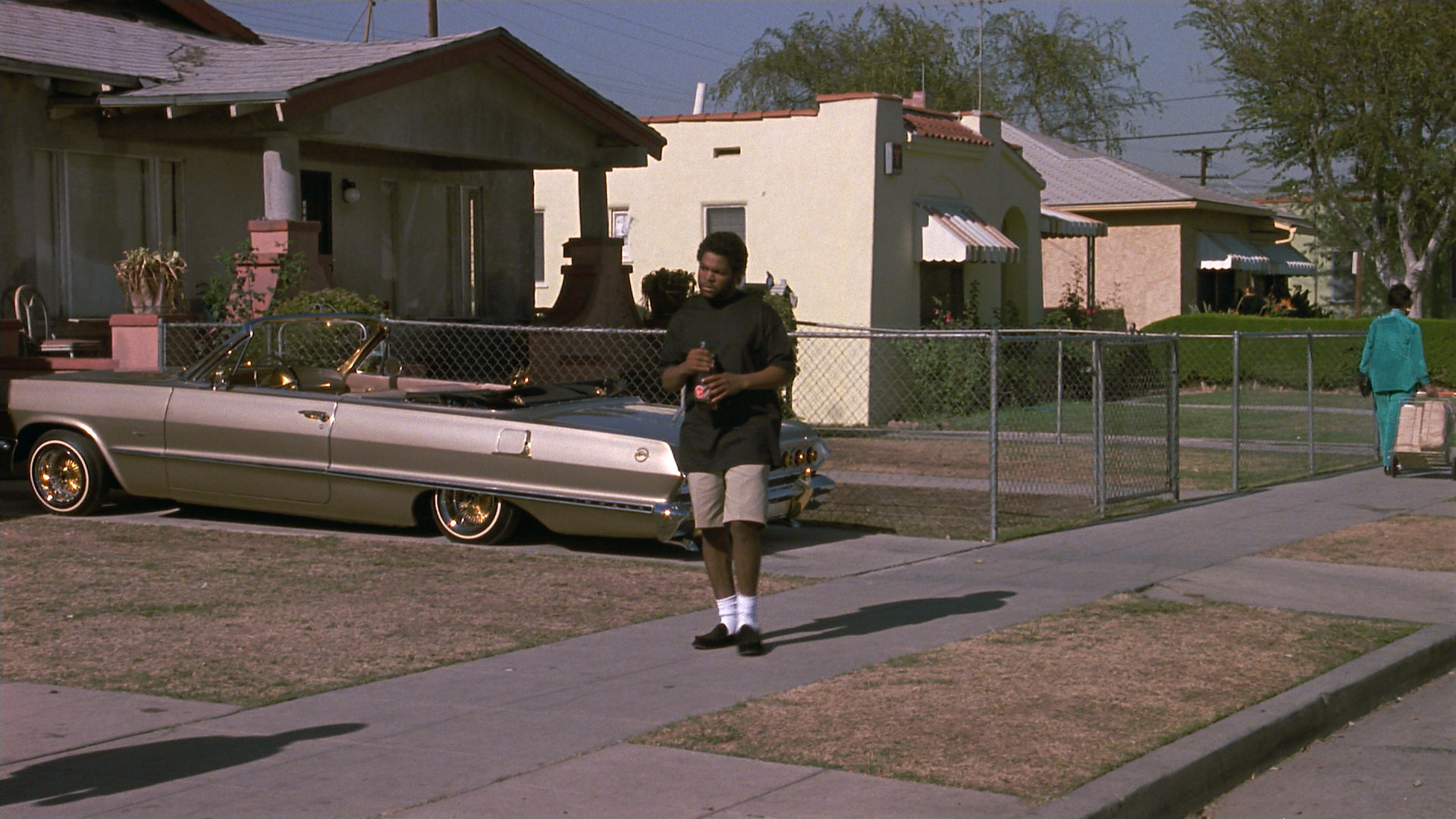Whither the Forty Ounce?
Naa Oyo A. Kwate

Doughboy walking down the street. Film still from Boyz n the Hood. © 1991, 1992 Columbia Pictures Industries, Inc. Courtesy of Columbia Pictures.
At the end of Boyz n the Hood, Doughboy crosses the street to talk to Tre. It’s morning—we don’t know what time, exactly, but Doughboy confesses that he hasn’t been up this early in a long time. It’s the day after his brother Ricky was gunned down in cold blood in an alley just blocks from their home, followed by Doughboy avenging his death with another volley of bullets. Doughboy carries a 40-ounce glass bottle of St. Ides malt liquor, two-thirds of his breakfast already consumed. It was probably purchased on location in South Central (now just called South) Los Angeles by the film’s prop department. The big red price sticker remains on the front: $1.49. The bullet-shaped bottle cuts an iconic silhouette, one that, in the 1990s, became a visual shorthand for young Black male masculinity.
Two summers ago, I saw a bottle of Olde English 800 in a supermarket in Philadelphia. It was plastic. At some point in the 2010s, the bottle changed from glass to plastic. This smaller, squat bottle actually contained more liquor: 42 ounces. It had a label that turned blue when the liquid was appropriately cold—necessary for a drink that is otherwise unpalatable. Plastic is cheaper than glass, but why give up a design that is so recognizable, even by people born long after the drink’s heyday, even by winemakers in other countries, such as the French Domaine Julien Braud, which sold its blend of Muscadelle, Loin de l’Oeil, and Muscat white wine in the iconic 40-ounce bottle shape and labeled it “Forty Ounce White”? And why market the terroir of southwest France in the visual language of a drink meant to be drunk to get drunk?
The new Olde English 800 had a big, fat, graspable plastic cap like soda, like juice, like iced tea, like Gatorade. It’s deceptive, but malt liquor is deceptive. Because packaged drinks are meant to taste good, but this is just meant to be swallowed. Malt liquor’s terroir is the shop floor, not south-facing calciferous parcels of earth that come through in a taste of crisp minerality. But the Olde English doesn’t deceive. The 42-ounce never promised anything but a math problem of percent alcohol by volume and what the liver can metabolize. Meanwhile, the planet cannot digest the container, and it takes revenge. Plastic is ill-suited to beer: the air oxidizes the brew; UV rays skunk it—still digestible, but ever more unpalatable sitting in the cold case.
42 ounces of 7.5 percent malt liquor meant to be a single serving, meant to be drunk quickly before you can actually taste it, before room temperature sets in. If you’re drunk—when you’re drunk—and your fine motor control is less than state of the art, and you drop it, the bottle won’t send up a fine spray of corn sweet malt and glass shards. And you won’t be out the couple of bucks you spent on it. The bottle won’t shatter, but the planet will.
The bottle says,
—I’m just trying to save you money!
I’m just trying to save you disappointment.
—Well, inasmuch as…
The bottle says,
—I will not shatter.
—I may shatter you.

